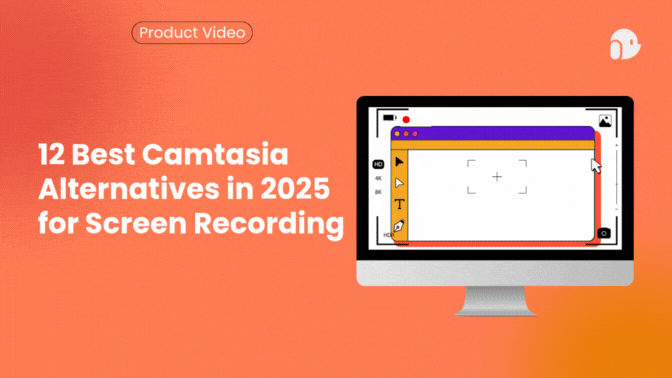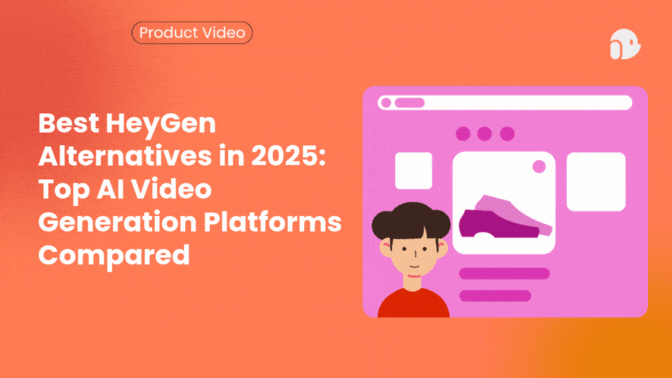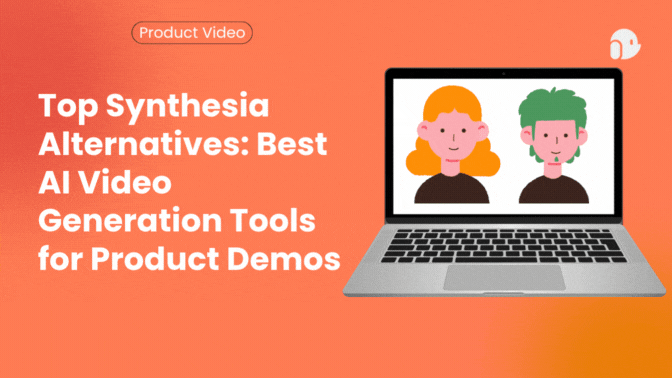The Ultimate Guide to SaaS Video Marketing Strategy
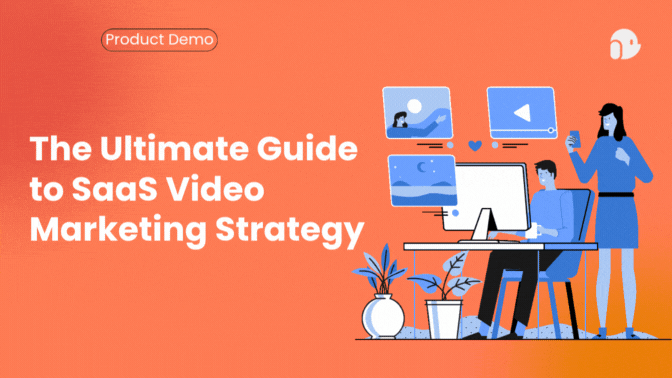
In SaaS, your product is invisible until someone sees it working. Video makes the invisible visible, fast. Whether you're selling to founders or busy product teams, the right video can shorten sales cycles, reduce support tickets, and actually make your demo feel human. Let’s be honest: demos alone aren’t enough anymore.
Why SaaS Needs Video
SaaS is abstract; that’s the problem. Videos translate complexity into a story someone can watch in 60–120 seconds. Marketers who lean into video see measurable uplifts in awareness and conversions, and yes, it’s becoming table stakes. If your competitors are using short explainers and on-demand demos, you’ll need to match that energy just to stay in the conversation.
Quick takeaways
- Video builds trust faster than text-based docs.
- It improves SEO and site dwell time.
- It’s efficient: a good demo can replace multiple back-and-forth emails.
Trends to Watch (so you don’t get left behind)
Short-form, mobile-first: B2B buyers watch content on phones during commutes or in between meetings. Short, vertical clips that hook in the first 3–10 seconds work surprisingly well for awareness.
Personalization & asynchronous communication: Personalized videos (a 1:1 demo snippet or a tailored walkthrough) + asynchronous tools (think Loom-style messages) make outreach feel thoughtful without killing reps’ calendars.
AI-powered editing & insights: Automated captions, smart trimming, and viewer-behavior analysis speed production and make optimization data-driven. Use AI to iterate, not to replace your message.
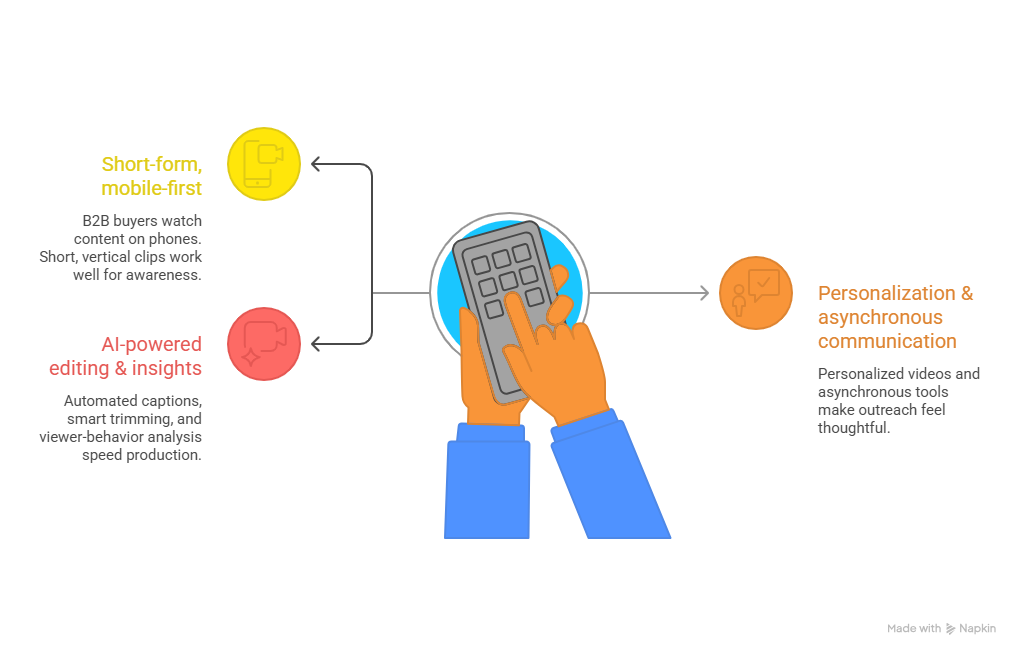
For a deeper dive into building a complete framework for lead generation, check out this guide on B2B software video marketing.
Map your videos to the funnel (do this, it actually helps)
A clear match between video type and buyer intent saves time and budget. Here’s a simple map:
- Awareness: Animated explainers, bite-sized social clips, 30–90 seconds.
- Consideration: Webinars, long-form walkthroughs, feature deep dives, 3–5 minutes.
- Conversion: Focused product demos, case-study videos, short testimonial clips, 2–5 minutes.
- Retention / Onboarding: Single-feature tutorials and in-app screencasts, 1–3 minutes
Purpose matters more than polish. A short, clear demo that shows how to solve a real problem will beat a long, glossy advert every time.
Production best practices (what actually moves the needle)
Start with the script. Write like you speak. Hook in the first 10 seconds. Show the problem, then show the fix.
Choose the right visual style. Use animation to simplify complex flows; use live action when you need authenticity (testimonials, team intros). Mixing both can be powerful.
Keep it tight. People skip long videos. Be ruthless: trim anything that doesn’t demonstrate value.
CTA that aligns with intent. Don’t push “Buy now” in an awareness clip. Instead, use: “See it in action,” “Start your free trial,” or “Watch a 2-minute demo.” Match the CTA to where the viewer is in the journey.
Distribution: where to post and why
Owned channels: Your website and blog. Embed demos on pricing and feature pages; this increases dwell time and conversion.
YouTube: Treat it like a search engine. Titles, descriptions, and closed captions matter.
LinkedIn: Best for B2B reach, native uploads often get better organic distribution than links.
Paid & retargeting: Use short ads to capture attention, then retarget viewers with mid-funnel content (demo, case study) to move them closer to conversion.
Tech stack notes (keep it sensible)
- Creation: Screen-recording and quick-edit tools for demos; animation tools for explainers. Puppydog.io fits nicely when you need personalized demo videos at scale. If you want step‑by‑step details, here’s a walkthrough on creating product demos with AI.
- Hosting & analytics: Consider platforms that offer heatmaps, lead capture, and CRM integrations (Wistia, Vidyard). Analytics are only useful if you act on them.
Measure what matters (not just views)
Track engagement (completion rate, heatmaps), then connect those behaviors to business outcomes: demo requests, trial activations, and ultimately revenue. Aim to improve your LTV: CAC ratio by using video to shorten the path to value and reduce churn via better onboarding.
Pro tip: Low completion on onboarding videos is a red flag for future churn. Use that signal to trigger human follow-up.
Quick playbook to get started (30–60 day plan)
- Week 1: Pick one high-impact page (pricing or features). Script and record a 90-second explainer.
- Week 2: Repurpose the video into a 15–30 second social clip and a 2–3 minute screencast demo.
- Week 3: Upload to YouTube, embed on the site, and test a small sponsored boost on LinkedIn.
- Week 4–8: Analyze engagement (heatmaps, completion). Iterate: shorten where viewers drop off, add clearer CTAs.
Repeat the loop. Keep a small library of modular clips for onboarding.
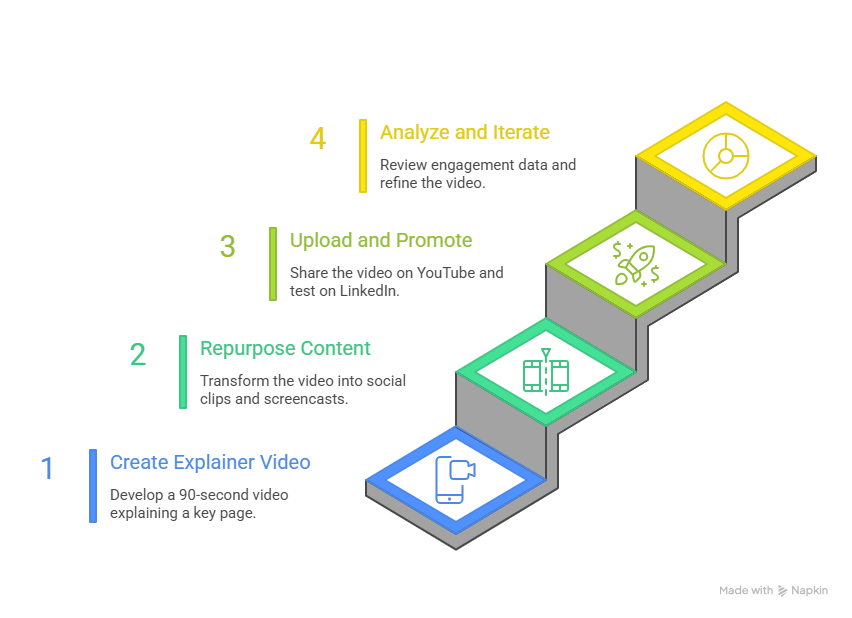
Conclusion — the short version
Video is no longer optional for serious SaaS teams. It shortens sales cycles, reduces support burden, and, when measured correctly, improves the economics of growth. Start small, make it useful, and scale the assets that clearly move KPIs.
FAQs
Q: What video should I make first?
Start with a short explainer for your homepage or pricing page. It’s the fastest path to clarity.
Q: How long should my videos be?
Awareness: 30–90 seconds. Demos/tutorials: 2–5 minutes. Onboarding snippets: 1–3 minutes.
Q: Is DIY ok, or should we hire pros?
DIY is great for demos and quick updates. Invest in professional production for cornerstone brand videos that will run in paid channels.
Q: Which platform drives the most B2B value?
YouTube for search and long-term discoverability; LinkedIn for targeted B2B reach; your site for conversion.
Q: How do I prove ROI?
Tie video engagement to trial activations and revenue. Track demo-to-paid conversion rates and watch LTV: CAC, that’s the real story.
Further Reading
Here are some high-quality resources (non-competitor) that expand on SaaS video marketing strategy and examples:
- The Rise of B2B SaaS Video Marketing (VideoDeck) — explores trends and effective video types in the B2B SaaS world. videodeck.co
SaaS Video Marketing Strategy Blueprint (eSelf.ai) — a deep strategic guide with step-by-step implementation ideas. eSelf AI

Sarah Thompson is a storyteller at heart and Business Developer at PuppyDog.io. She’s passionate about creating meaningful content that connects people with ideas, especially where technology and creativity meet.




